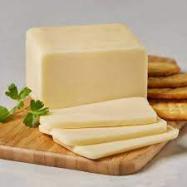The Better to See Your Food: The perforated metal screen inside the glass of your microwave oven door is specially designed so that light (which has a short wavelength) can pass through the tiny holes, but microwave radiation (which has a longer wavelength) cannot. 
Neapolitan: The name of Three Musketeers candy makes a lot more sense when you discover that in the original version, the candy came with three bars: one chocolate, one vanilla, and one strawberry.
Candy Lands: Due to licensing laws and contracts, all the Kit-Kat candy bars made in the USA are produced by Hershey’s and all the Kit-Kats made in the rest of the world are produced by Nestle.
 Milk’s best friend: Oreo cookies were introduced in 1912 and are the best-selling cookies in the United States.
Milk’s best friend: Oreo cookies were introduced in 1912 and are the best-selling cookies in the United States.
Now You’re Cooking With PAM: Introduced in the early 1960s, PAM cooking spray wasn’t named after a woman named Pam. It was an acronym for the inventor: Product of Arthur Meyerhoff.
Say Cheese: Monterey Jack is named after a person–David Jack, the first person to sell it commercially–and a place, Monterey, Alta California,  home to the 18th century friars who made the original cheese.
home to the 18th century friars who made the original cheese.
Pop Goes the Popping: The popular brand of popcorn, Act II, was preceded by Act I—a product notable because it was made with real butter and required refrigeration.
How Does Your Garden Grow? The tomato is the most popular vegetable grown by American gardeners with 86% of gardeners planting it each year. 
Food Snobs: The iconic “Big Mac” McDonald’s burger wasn’t always known as such; invented and marketed in Pittsburgh, it was originally called “The Aristocrat”, then “The Blue Ribbon Burger.”
Airbag: Potato chip bags are filled with nitrogen gas to prevent spoilage and soggy chips. The extra “air” also helps protect the chips from being damaged by rough handling during the shipping process.
 Spicing Things Up: When it comes to spice production, nobody can hold a candle to India. Around 75 percent of all the spices in the world are produced there and they out produce the next contender, Bangladesh, by tenfold.
Spicing Things Up: When it comes to spice production, nobody can hold a candle to India. Around 75 percent of all the spices in the world are produced there and they out produce the next contender, Bangladesh, by tenfold.
Worth Waiting For: Tabasco Sauce, that iconic spicy American condiment,  takes three years to produce. Most of that time is invested in the fermentation process, which helps soften and break down the raw peppers without cooking them.
takes three years to produce. Most of that time is invested in the fermentation process, which helps soften and break down the raw peppers without cooking them.
Do you have trivia or obscure knowledge about the food we eat you want to share?




 And a fast, easy tuna dish,
And a fast, easy tuna dish, 



